Black And Decker VP940 Handleiding
Bekijk gratis de handleiding van Black And Decker VP940 (6 pagina’s), behorend tot de categorie Niet gecategoriseerd. Deze gids werd als nuttig beoordeeld door 12 mensen en kreeg gemiddeld 4.4 sterren uit 6.5 reviews. Heb je een vraag over Black And Decker VP940 of wil je andere gebruikers van dit product iets vragen? Stel een vraag
Pagina 1/6

WARNING: IMPORTANT SAFETY WARNINGS AND INSTRUCTIONS
TO REDUCE RISK OF INJURY:
• Before any use, be sure everyone using this tool reads and understands all safety
instructions and other information contained in this manual.
• Save these instructions and review frequently prior to use and in instructing others.
WARNING: When using electric tools, basic safety precautions should always be
followed to reduce risk of fire, electric shock, and personal injury, including the following.
READ ALL INSTRUCTIONS
GENERAL SAFETY WARNINGS AND INSTRUCTIONS FOR ALL
TOOLS
•KEEP WORK AREA CLEAN. Cluttered areas and benches invite injuries.
•CONSIDER WORK AREA ENVIRONMENT. Keep work area well lit. Do not use tool in
presence of flammable liquids or gases. Motors in these tools normally spark, and the
sparks may ignite the fumes.
•GUARD AGAINST ELECTRIC SHOCK. Prevent body contact with grounded surfaces.
For example; pipes, radiators, ranges, and refrigerator enclosures. Do not contact any
exposed electrical terminals with the tool. Use extreme caution when drilling, driving or
cutting into walls, floors ceilings or other areas or wherever live electrical wires may be
encountered, DO NOT TOUCH ANY METAL PARTS OF THE TOOL. Hold the tool only by
the plastic handle to prevent electric shock.
•KEEP CHILDREN AWAY. Do not permit children and visitors to contact the tool. All
children and visitors should be kept away from work area.
•STORE IDLE TOOLS. When not in use, tools should be stored in dry, and high or locked-
up place — out of reach of children.
•DON’T FORCE TOOL. It will do the job better and safer at the rate for which it was
intended.
•USE RIGHT TOOL. Don’t force small tool or attachment to do the job of a heavy-duty tool.
Don’t use tool for purpose not intended — for example — don’t use circular saw for cutting
tree limbs or logs.
•DRESS PROPERLY. Do not wear loose clothing or jewelry. They can be caught in moving
parts. Rubber gloves and non-skid footwear are recommended when working outdoors.
Wear protective hair covering to contain long hair.
•USE SAFETY GLASSES. Also use face or dust mask if tool operation is dusty.
•SECURE WORK. Use clamps or a vise to hold work. It’s safer than using your hand and it
frees both hands to operate tool.
•DON’T OVERREACH. Keep proper footing and balance at all times.
•MAINTAIN TOOLS WITH CARE. Keep tools sharp and clean for better and safer
performance. Follow instructions for lubricating and changing accessories. Inspect tool
periodically and if damaged, have repaired by authorized service facility only. Keep
handles dry, clean, and free from oil and grease.
•DISCONNECT/LOCK OFF TOOLS when not in use, before servicing, and when
changing accessories, such as blades, bits, cutters.
•REMOVE ADJUSTING KEYS AND WRENCHES. Form habit of checking to see that
keys and adjusting wrenches are removed from tool before turning it on.
•AVOID UNINTENTIONAL STARTING. Don’t carry tool with finger on switch. Be sure
switch is in the off position (lock off if available) when carrying.
•STAY ALERT. Watch what you are doing. Use common sense. Do not operate tool when
you are tired or otherwise impaired.
•CHECK DAMAGED PARTS. Before further use of the tool, a guard or other part that is
damaged should be carefully checked to determine that it will operate properly and
perform its intended function. Check for alignment of moving parts, binding of moving
parts, breakage of parts, mounting, and any other conditions that may affect its operation.
A guard or other part that is damaged should be properly repaired or replaced by an
authorized service center unless otherwise indicated elsewhere in this instruction manual.
Have defective switches
replaced by authorized service center. Do not use tool if switch does not turn it on and off.
•REPAIRS AND SERVICE. Repairs, maintenance and adjustment should be performed by
authorized service centers or other qualified service organizations, always using identical
replacement parts.
•THE USE OF OTHER ACCESSORIES. The use of any other accessory not
recommended for use with this tool could be hazardous.
IMPORTANT SAFETY INSTRUCTIONS (FOR BATTERY AND CHARGER)
1. SAVE THESE INSTRUCTIONS- This manual contains important safety instructions for
battery chargers.
2. Before using battery charger, read all instructions and cautionary markings on battery
charger, battery and product using battery.
3. CAUTION:-To reduce the risk of injury, charge only nickel cadmium rechargeable
batteries. Other types of batteries may burst causing personal injury and damage.
WARNING: Some dust created by power sanding, sawing, grinding, drilling, and other con-
struction activities contains chemicals known to cause cancer, birth defects or other reproduc-
tive harm. Some examples of these chemicals are:
• lead from lead-based paints,
• crystalline silica from bricks and cement and other masonry products, and
• arsenic and chromium from chemically-treated lumber (CCA).
Your risk from these exposures varies, depending on how often you do this type of work. To
reduce your exposure to these chemicals: work in a well ventilated area, and work with
approved safety equipment, such as those dust masks that are specially designed to filter out
microscopic particles.
• Avoid prolonged contact with dust from power sanding, sawing, grinding, drilling,
and other construction activities. Wear protective clothing and wash exposed areas
with soap and water. Allowing dust to get into your mouth, eyes, or lay on the skin
may promote absorption of harmful chemicals.
SAVE THESE INSTRUCTIONS
WARNING: When using electric tools, basic safety precautions should always be followed
to reduce risk of fire, electric shock, and personal injury, including the following:
READ ALL INSTRUCTIONS
1. Do not store or carry battery so that metal objects can contact exposed metal end
shown below. For example, do not place battery in aprons, pockets, tool boxes, drawers
etc. with loose nails, screws, keys, etc. without battery cap. Battery could short circuit
causing fire or burns or damage to battery.
2. Battery caps are provided for use when carrying batteries or while battery is stored in a
pocket, tool box, etc. Remove cap before placing battery in charger or tool.
3. Never attempt to open the battery for any reason. If the housing of the battery breaks or
cracks, immediately discontinue use and do not recharge.
4. Do not incinerate the batteries. They can explode in a fire. A small leakage of liquid from
the battery cells may occur under extreme usage, charging or temperature conditions.
This does not indicate a failure. However, if the outer seal is broken and this leakage
gets on your skin:
a. Wash quickly with soap and water.
b. Neutralize with a mild acid such as lemon juice or vinegar.
c. If the battery liquid gets in your eyes, flush them with clean water for a minimum of 10
minutes and seek immediate medical attention.
MEDICAL NOTE: The liquid is a 25-35% solution of potassium hydroxide.
5. Charge batteries only with VersaPak battery charger.
6. Do not use charger in wet or damp conditions. It is intended for indoor use only. Do not
use near sinks, tubs, or the like. Do not immerse in water.
7. Do not use charger for any uses other than charging VersaPak batteries. Other batteries
may explode.
8. Do not operate charger with damaged cord or plug — have them replaced immediately.
9 Do not operate charger if it has received a sharp blow, been dropped, or
otherwise damaged in any way; take it to a qualified Black & Decker service center.
10. Do not disassemble charger; take it to a qualified Black & Decker service center when
service or repair is required. Incorrect reassembly may result in risk of electric shock or
fire. There are no consumer serviceable parts inside.
11.For best results, do not charge batteries when they or air temperature is BELOW +40°F or
ABOVE +105°F.
12. The charger is designed to operate on standard household electrical power. Do not
attempt to use it on any other voltage. Be sure your power supply agrees with the
nameplate marking.
13. Unplug charger when not in use.
14. Do not abuse charger cord. To reduce the risk of damage to electric plug and cord,
never carry charger by cord or yank it to disconnect from receptacle. Keep charger cord
from heat, oil, and sharp edges.
15. Use only charger supplied by the manufacturer to recharge.
IMPORTANT CHARGING NOTES
1. While charging, the charger transformer may hum and batteries and charger become
warm. This is a normal condition and does not indicate a problem.
2. If a battery does not charge properly— (1) Check current at receptacle by plugging in a
lamp or other appliance. (2) Check to see if receptacle is connected to a light switch
which turns power off when you turn out the lights. (3) Move charger and batteries to a
surrounding air temperature of +40°F to +105°F. (4) If the receptacle and temperature
are OK, and you do not get proper charging, take or send the batteries and charger to
your local Black & Decker service center. See "Tools Electric" in yellow pages.
3. The batteries should be recharged when they fail to produce sufficient power on jobs
which were easily done previously. DO NOT CONTINUE to use the tool with its
batteries in a depleted condition.
CHARGING PROCEDURE
Insert the metal end of the VersaPak battery into the charger. The indicator light will glow
indicating that charging is taking place and will remain on as long as the battery is in the
charger. Continuous charging is not a safety concern.
NOTE: Your VersaPak battery was sent from the factory in an uncharged condition.
Before attempting to use it for the first time, it must be charged for 6 hours.
Subsequent charging for most fix up jobs will require 3-6 hours.
ADDITIONAL SAFETY WARNINGS AND INSTRUCTIONS
ALWAYS WEAR EYE PROTECTION WHEN USING THIS TOOL!
• Hold tool by insulated gripping surfaces when performing an operation where the
cutting tool may contact hidden wiring or its own cord. Contact with a "live" wire will
make exposed metal parts of the tool "live" and shock the operator.
•Keep handles dry, clean, free from oil and grease. It is recommended to use rubber
gloves. This will enable better control of the tool.
• When cutting wood, extra care should be taken to avoid inhalation and minimize skin
contact.
CAUTION: When cutting into walls, floors or wherever live electrical wires may be
BATTERY CAP
METAL END
CAT. NO. VP940 FORM NO. 154760-00 PRINTED IN CHINA (SEP-02 -1)
KEY INFORMATION YOU SHOULD KNOW:
•Charge battery for 6 hours before first use.
•Charger may hum; batteries or charger may become warm while charging.
1-800-54-HOW-TO
1-800-54-HOW-TO
1-800-54-HOW-TO
1-800-54-HOW-TO1-800-54-HOW-TO
BEFORE RETURNING THIS PRODUCT
BEFORE RETURNING THIS PRODUCT
BEFORE RETURNING THIS PRODUCT
BEFORE RETURNING THIS PRODUCT BEFORE RETURNING THIS PRODUCT
FOR ANY REASON PLEASE CALL
FOR ANY REASON PLEASE CALL
FOR ANY REASON PLEASE CALL
FOR ANY REASON PLEASE CALLFOR ANY REASON PLEASE CALL
IF YOU SHOULD EXPERIENCE A PROBLEM
WITH YOUR PURCHASE,BLACK & DECKER
CALL .1-800-54-HOW-TO (1-800-544-6986)
IN MOST CASES, A REPRESENTATIVEBLACK & DECKER
CAN RESOLVE YOUR PROBLEM OVER THE PHONE.
IF YOU HAVE A SUGGESTION OR COMMENT,
GIVE US A CALL. YOUR FEEDBACK IS VITAL
TO THE SUCCESS OF BLACK & DECKER'S QUALITY
IMPROVEMENT PROGRAM.
(544-6986)
VEA EL ESPAÑOL EN LA CONTRAPORTADA.
SAVE THIS MANUAL FOR FUTURE REFERENCE.
INSTRUCTIVO DE OPERACIÓN, CENTROS DE SERVICIO Y PÓLIZA DE
GARANTÍA. ADVERTENCIA: LÉASE ESTE INSTRUCTIVO ANTES DE USAR EL
PRODUCTO.
INSTRUCTION MANUAL
VP940
V
V
V
V
V
V
V
V
V
Ve
e
e
e
e
e
e
e
e
er
r
r
r
r
r
r
r
r
rs
s
s
s
s
s
s
s
s
sd
d
d
d
d
d
d
d
d
da
a
a
a
a
a
a
a
a
aP
P
P
P
P
P
P
P
P
Pa
a
a
a
a
a
a
a
a
ak
k
k
k
k
k
k
k
k
k™
™
™
™
™
™
™
™
™
™
3
3
3
3
3
3
3
3
3
3.
.
.
.
.
.
.
.
.
.6
6
6
6
6
6
6
6
6
6V
V
V
V
V
V
V
V
V
V
2
2
2
2
2
2
2
2
2
2-
-
-
-
-
-
-
-
-
-S
S
S
S
S
S
S
S
S
Sp
p
p
p
p
p
p
p
p
pe
e
e
e
e
e
e
e
e
ee
e
e
e
e
e
e
e
e
ed
d
d
d
d
d
d
d
d
d
R
R
R
R
R
R
R
R
R
Ro
o
o
o
o
o
o
o
o
ot
t
t
t
t
t
t
t
t
ta
a
a
a
a
a
a
a
a
ar
r
r
r
r
r
r
r
r
ry
y
y
y
y
y
y
y
y
y
T
T
T
T
T
T
T
T
T
To
o
o
o
o
o
o
o
o
oo
o
o
o
o
o
o
o
o
ol
l
l
l
l
l
l
l
l
l

encountered, DO NOT TOUCH ANY METAL PARTS OF THE TOOL! Hold the tool only by
insulated grasping surfaces to prevent electric shock if you cut into a live wire.
•NEVER LEAVE TOOL RUNNING UNATTENDED. Always turn switch OFF when not in use
and before inserting battery.
•REMOVE BATTERY BEFORE CHANGING ACCESSORIES. Always remove battery when
adjusting, removing or installing accessories, or when the tool is not in use.
•REPLACE A BROKEN ACCESSORY IMMEDIATELY. Before using, inspect accessory for
cracks or flaws. If these are evident, discard accessory.
•SECURE ACCESSORY SHAFT IN COLLET. Ensure accessory is placed fully into collet
and collet nut is tightened securely.
•USE ACCESSORIES PROPERLY. Use accessories only in the proper and intended
manner.
•USE SAFETY GLASSES AND OTHER SAFETY EQUIPMENT. Use safety goggles or
safety glasses. Also use face or dust mask if operation is dusty. This applies to all persons in
the work area.
•KEEP HANDS AWAY FROM ROTATING ACCESSORIES. Accessories can rotate at
18,000 RPM and cause injury if touched.
•DO NOT TOUCH THE BIT OR COLLET IMMEDIATELY AFTER USE. Bit and collet may
become hot after use.
•BE AWARE OF THE SWITCH LOCATION WHEN PUTTING THE TOOL DOWN OR
PICKING IT UP. You may accidentally activate the switch.
•If the workpiece or accessory becomes jammed, turn the tool OFF and wait for the
spindle to stop rotating before freeing the jammed material. If the switch is left ON, the
tool could restart unexpectedly, causing serious personal injury.
•GUARD AGAINST KICKBACK. Kickback is the sudden movement of the tool, during a cut,
back toward the operator which may cause serious personal injuries.
•ACCESSORIES MUST BE RATED FOR AT LEAST THE SPEED RECOMMENDED ON
THE TOOL WARNING LABEL. Wheels and other accessories running over rated speed
can fly apart and cause injury.
DANGER: TURN TOOL OFF IMMEDIATELY IF ACCESSORY BINDS OR TOOL
STALLS.
nut until the spindle is locked in place (Fig. 3).
3. While depressing the spindle lock button, turn the collet nut counter-clockwise and
remove it from the threaded spindle (Fig. 3).
4. Insert the new collet into the spindle (see Fig. 5).
5. Depress the spindle lock button, lock the spindle in place by turning the collet nut, and
continue turning the collet nut clockwise. Tighten the collet nut securely.
USING THE ROTARY TOOL
When operating the tool, be sure to hold it securely, as shown in the chart in this manual. For
detail work, grip the knurled areas at the front of the tool, near the spindle. Do not force the
rotary tool. Allow the speed of rotation to do the work. Minimal pressure is required.
ACCESSORIES
Recommended accessories for use with your tool are available from your local dealer or
authorized service center. If you need assistance regarding accessories, please call: 1-800-
54-HOW TO.
NOTE: Your tool is compatible with most Dremel and Craftsman rotary tool accessories.
WARNING: The use of any accessory not recommended for use with this tool could be
hazardous.
MAINTENANCE
Use only mild soap and damp cloth to clean the tools. Never let any liquid get inside the tool;
never immerse any part of the tool into a liquid.
IMPORTANT: To assure product SAFETY and RELIABILITY, repairs, maintenance and
adjustment (other than those listed in this manual) should be performed by authorized service
centers or other qualified service organizations, always using identical replacement parts.
THE RBRC™SEAL
The RBRC (Rechargeable Battery Recycling Corporation)™
Seal on the nickel-cadmium battery (or battery pack) indicates that the costs to
recycle the battery (or battery pack) at the end of its useful life have already been
paid by Black & Decker. In some areas, it is illegal to place spent nickel-cadmium
batteries in the trash or municipal solid waste stream and the RBRC program
provides an environmentally conscious alternative.
RBRC in cooperation with Black & Decker and other battery users, has established
programs in the United States and Canada to facilitate the collection of spent nickel-
cadmium batteries. Help protect our environment and conserve natural resources by
returning the spent nickel-cadmium battery to an authorized Black & Decker service center
or to your local retailer for recycling. You may also contact your local recycling center for
information on where to drop off the spent battery, or call 1-800-8-BATTERY.
SERVICE INFORMATION
Black & Decker offers a full network of company-owned and authorized service locations
throughout North America. All Black & Decker Service Centers are staffed with trained
personnel to provide customers with efficient and reliable power tool service. Whether you
need technical advice, repair, or genuine factory replacement parts, contact the Black &
Decker location nearest you. To find your local service location, refer to the yellow page
directory under "Tools—Electric" or call: 1-800-54-HOW TO.
FULL TWO-YEAR HOME USE WARRANTY
Black & Decker (U.S.) Inc. warrants this product for two years against any defects in material
or workmanship. The defective product will be replaced or repaired at no charge in either of
two ways.
The first, which will result in exchanges only, is to return the product to the retailer from
whom it was purchased (provided that the store is a participating retailer). Returns should be
made within the time period of the retailer s policy for exchanges (usually 30 to 90 days after’
the sale). Proof of purchase may be required. Please check with the retailer for their specific
return policy regarding returns that are beyond the time set for exchanges.
The second option is to take or send the product (prepaid) to a Black & Decker owned or
authorized Service Center for repair or replacement at our option. Proof of purchase may be
required. Black & Decker owned and authorized Service Centers are listed under "Tools-
Electric" in the yellow pages of the phone directory.
This warranty does not apply to accessories. This warranty gives you specific legal rights
and you may have other rights which vary from state to state. Should you have any
questions, contact the manager of your nearest Black & Decker Service Center.
These products are not intended for commercial use.
SAVE THESE INSTRUCTIONS
OPERATING INSTRUCTIONS FOR ALL VERSAPAK TOOLS
REMOVING AND INSTALLING THE BATTERIES
NOTE: VERSAPAK™BATTERIES ARE NOT FULLY CHARGED AT THE FACTORY.
To install the battery into the tool, slide it into the handle until it clicks into place.
To remove the VersaPak battery from the tool, press the release button, (Fig. 1), and pull™
the battery out of the tool handle.
NOTE: Battery caps are provided for use when carrying batteries or while battery is stored in
a pocket, tool box, etc. Remove cap before placing battery in charger or tool. Install the battery
cap, by snapping it in place. To remove the cap, simply pull it off.
OPERATING INSTRUCTIONS
SWITCH
Your tool has a two-speed switch (Fig. 2). For high speed, push the switch to the RIGHT. For
low speed, push the switch to the LEFT. The middle position turns the tool OFF.
Be sure to select the proper speed for your rotary tool operation. The chart in this manual
provides a speed guide for various operations.
CHANGING ACCESSORIES
Accessories are held in place by a collet and collet nut.
To insert an accessory:
1. Turn off tool and remove battery.
2. Depress the spindle lock button (see Fig. 3) and grasp the collet nut. Gently twist collet
nut until the spindle is locked in place.
3. While depressing the spindle lock button, turn the collet nut counter-clockwise until it is
loose.(see Fig.3)
4. Insert the new accessory into the collet as far as it will go (Fig. 4).
5. Depress the spindle lock button, lock the spindle in place by turning the collet nut, and
continue turning the collet nut clockwise. Tighten the collet nut securely.
CHANGING THE COLLET
Some accessories require different sized collets. The two collets used with Black & Decker
accessories are 1/8" (used for most accessories) and 3/32" (used mainly with rubber
polishing bits and diamond points). Ensure your collet size matches your accessory.
To change the collet:
1. Turn off tool and remove battery.
2. Depress the spindle lock button (see Fig. 3) and grasp the collet nut. Gently twist collet
Cutting Metal
Coupe de métal
Corte de metal
High
Élevée
Alta
Sanding Wood
Ponçage de bois
Lijar madera
High
Élevée
Alta
Sharpening
Affûtage
Afilar
High
Élevée
Alta
Polishing
Polissage
Pulir
Low
Basse
Baja
High
Élevée
Alta
High
Élevée
Alta
Low
Basse
Baja High
Élevée
Alta
High
Élevée
Alta
Stripping Metal
Enlèvement de métal
Bruñir metal
Deburring
Ébarbage
Abocardar
Removing Rust
Enlèvement de rouille
Remover óxido
Engraving Metal
Gravure de métal
Grabar en metal
Drilling
Perçage
Taladrar
1
2
3
4
Release button
Bouton de dégagement
Botón de liberación
Two-speed switch
Interrupteur à 2 vitesses
Interruptor de dos velocidades
Collet nut
Écrou de la douille
Tuerca de la mordaza
Collet nut
Écrou de la douille
Tuerca de la
mordaza
Collet
Douille
Mordaza
Low speed
Basse vitesse
Baja velocidad
High speed
Vitesse élevée
Alta velocidad
Spindle lock button
Bouton de verrouillage de l´arbre
Botón del seguro de la flecha
Spindle
Arbre
Flecha
5
Middle position turns the tool OFF.
La position centrale met l´outil hors tension.
La posición media APAGA la herramienta
See Tools-Electric‘ ’
– Yellow Pages –
for Service & Sales
Imported by
Black & Decker (U.S.) Inc.,
701 E. Joppa Rd.
Towson, MD 21286 U.S.A.
AVERTISSEMENT : IMPORTANTES MESURES DE SÉ ÉCURIT
AFIN DE RÉDUIRE LES RISQUES DE BLESSURES RESPECTER CE QUI SUIT, .
•Avant toute utilisation, s'assurer que tous ceux qui se servent de l'outil lisent et
comprennent toutes les mesures de s et tout autre renseignement contenus dans leécurité
présent guide.
• éConserver ces mesures et les relire fr quemment avant d'utiliser l'outil et d'en expliquer le
fonctionnement à d'autres personnes.
AVERTISSEMENT : Afin de r duire les risques d'incendie, de secousses lectriques ou deé é
blessures lorsqu'on utilise des outils lectriques, il faut toujours respecteré
les mesures de s suivantes.écurité
LIRE TOUTES LES DIRECTIVES.
MESURES DE SÉCURITÉ POUR TOUS LES OUTILS
•BIEN DÉGAGER LA SURFACE DE TRAVAIL. Des surfaces et des tablis encombré és
peuvent être la cause de blessures.
•TENIR COMPTE DU MILIEU DE TRAVAIL. Bien éclairer la surface de travail. Ne pas se
servir de l'outil en pr sence de liquides ou de gaz inflammables. Le moteur de l'outil gé é èn re
habituellement des tincelles qui peuvent enflammer les vapeurs.é
• ÉSE PROTÉ ÉGER CONTRE LES SECOUSSES LECTRIQUES. viter tout contact avec
des objets mis la terre, comme des tuyaux, radiateurs, cuisini res, r rateurs et autresà è éfrigé
objets du genre. Prendre garde lorsqu'on perce, visse ou coupe des murs, des planchers,
des plafonds ou toute autre surface o on pourrait rencontrer des fils sous tension. NE PASù
TOUCHER AUX COMPOSANTS M TALLIQUES DE L'OUTIL. Saisir l'outil seulement parÉ
sa poign e en plastique afin de pré évenir les risques de secousses électriques.
CONSERVER LE PRÉSENT GUIDE TITRE DE R RENCE.À É ÉF
RENSEIGNEMENTS IMPORTANTS
• èCharger la pile pendant 6 heures avant la premi re utilisation.
• éLe chargeur peut mettre un bourdonnement; les piles ou le chargeur peuvent
devenir chauds au toucher pendant le chargement..
O
O
O
O
O
O
O
O
O
Ou
u
u
u
u
u
u
u
u
ut
t
t
t
t
t
t
t
t
ti
i
i
i
i
i
i
i
i
il
l
l
l
l
l
l
l
l
l
r
r
r
r
r
r
r
r
r
ro
o
o
o
o
o
o
o
o
ot
t
t
t
t
t
t
t
t
ta
a
a
a
a
a
a
a
a
at
t
t
t
t
t
t
t
t
ti
i
i
i
i
i
i
i
i
if
f
f
f
f
f
f
f
f
f
V
V
V
V
V
V
V
V
V
Ve
e
e
e
e
e
e
e
e
er
r
r
r
r
r
r
r
r
rs
s
s
s
s
s
s
s
s
sa
a
a
a
a
a
a
a
a
aP
P
P
P
P
P
P
P
P
Pa
a
a
a
a
a
a
a
a
ak
k
k
k
k
k
k
k
k
km
m
m
m
m
m
m
m
m
mc
c
c
c
c
c
c
c
c
c
d
d
d
d
d
d
d
d
d
de
e
e
e
e
e
e
e
e
e
3
3
3
3
3
3
3
3
3
3,
,
,
,
,
,
,
,
,
,6
6
6
6
6
6
6
6
6
6
V
V
V
V
V
V
V
V
V
V
à
à
à
à
à
à
à
à
à
à
2
2
2
2
2
2
2
2
2
2
v
v
v
v
v
v
v
v
v
vi
i
i
i
i
i
i
i
i
it
t
t
t
t
t
t
t
t
te
e
e
e
e
e
e
e
e
es
s
s
s
s
s
s
s
s
ss
s
s
s
s
s
s
s
s
se
e
e
e
e
e
e
e
e
es
s
s
s
s
s
s
s
s
s
GUIDE D’UTILISATION
AVANT DE RETOURNER LE PRODUIT, PEU IMPORTE LA RAI-
SON, PRI RE DE COMPOSERÈ
1 800 544-6986

•ÉLOIGNER LES ENFANTS. Tous les visiteurs doivent tre tenus l' cart de l'aire deê à é
travail et il faut les emp cher de toucher l'outil.ê à
• éRANGER LES OUTILS INUTILISÉS. Il faut ranger les outils dans un endroit sec, situ en
hauteur ou fermé à é é cl , hors de la port e des enfants.
•UTILISER L'OUTIL APPROPRIÉ.Ne jamais exiger d'un petit outil ou d'un accessoire le
rendement d'un outil de fabrication plus robuste. Se servir de l'outil selon l'usage prévu
(ainsi, ne pas se servir d'une scie circulaire pour couper des bûches).
• É êPORTER DES VÊ ÉTEMENTS APPROPRI S. viter de porter des v tements amples et
des bijoux qui peuvent tre happ s par les pi ces en mouvement. Porter des gants deê é è
caoutchouc et des chaussures semelle antid rapante pour travailler l'extà é à érieur.
Protéger la chevelure si elle est longue.
• éPORTER DES LUNETTES DE SÉ ÉCURIT . Porter galement un masque respiratoire si le
travail de coupe produit de la poussière.
• èASSUJETTIR LA PIÈCE. Immobiliser la pi ce à é l'aide de brides ou d'un tau. On peut
alors se servir des deux mains pour faire fonctionner l'outil, ce qui est plus sûr.
•NE PAS D PASSER SA PORTÉ ÉE. Toujours demeurer dans une position stable et garder
son équilibre.
• û éPRENDRE SOIN DES OUTILS. Conserver les outils propres et aff t s pour qu'ils donnent
un rendement sup rieur et s r. Suivre les directives concernant la lubrification et leé û
remplacement des accessoires. Inspecter r rement l'outil et le faire r parer au besoinéguliè é
à é é è un atelier d'entretien autoris . S'assurer que les poign es sont toujours propres, s ches
et libres de toute tache d'huile ou de graisse.
•DÉBRANCHER OU VERROUILLER EN POSITION HORS TENSION LES OUTILS NON
UTILIS S.ÉRespecter cette mesure lorsqu'on ne se sert pas de l'outil, ou qu'on doit le
réparer ou en changer un accessoire (comme une lame, un foret ou un couteau).
• é é éENLEVER LES CLÉ ÉS DE R GLAGE. Prendre l'habitude de v rifier si les cl s de r glage
ont été retirées avant de faire démarrer l'outil.
•É ÉVITER LES D MARRAGES ACCIDENTELS. Ne pas laisser le doigt sur l'interrupteur
lorsqu'on transporte l'outil. S'assurer que l'interrupteur est la position hors circuit (età
verrouillé, dans la mesure du possible) lorsqu'on transporte l'outil.
•DEMEURER VIGILANT. Travailler avec vigilance et faire preuve de bon sens. Ne pas se
servir de l'outil lorsqu'on est fatigué.
• àVÉRIFIER LES PIÈCES ENDOMMAGÉES. Avant de continuer utiliser l'outil, il faut
vérifier si le protecteur ou toute autre pièce endommagée remplit bien la fonction pour
laquelle il a pr vu. V rifier l'alignement et les attaches des pié été é èces mobiles, le degré
d'usure des pi ces et leur montage, ainsi que tout autre facteur susceptible de nuire au bonè
fonctionnement de l'outil. Faire r parer ou remplacer tout protecteur ou toute autre pié èce
endommagée dans un centre de service autorisé, sauf si le présent guide fait mention d'un
avis contraire. Confier le remplacement de tout interrupteur défectueux à un centre de
service autoris . Ne jamais se servir d'un outil dont l'interrupteur est dé éfectueux.
•RÉPARATIONS ET ENTRETIEN. Confier les r parations, l'entretien et les ré églages à un
centre de service ou un atelier d'entretien autoris utilisant toujours des pi ces deà é è
rechange identiques.
•L'UTILISATION DE TOUT AUTRE ACCESSOIRE non recommand pour l'outil peut é être
dangereuse.
IMPORTANTES MESURES DE S CURIT (POUR LES PILES ET LE CHARGEUR)É É
1. CONSERVER CES MESURES. - Le pr sent guide renferme d'importantes mesures deé
sécurité relatives aux chargeurs.
2. Avant d'utiliser un chargeur, lire toutes les directives et les mises en garde inscrites sur le
chargeur, la pile et le produit utilisant la pile.
3. MISE EN GARDE : Afin de réduire les risques de blessures, utiliser seulement pour
charger des piles rechargeables au nickel-cadmium. D'autres types de piles pr sentent desé
risques d'explosion, de blessures et de dommages.
AVERTISSEMENT : certains outils lectriques, tels que les sableuses, les scies, lesé
meules, les perceuses ou certains autres outils de construction, peuvent produire de la pous-
si entraère contenant des produits chimiques susceptibles d’ îner le cancer, des malformations
congénitales ou pouvant être nocifs pour le système reproductif. Parmi ces produits chim-
iques, on retrouve :
• le plomb dans les peintures base de plomb, à
• la silice cristalline dans les briques et le ciment et autres produits de maçonnerie,
• l’arsenic et le chrome dans le bois de sciage ayant subi un traitement chimique (comme
l’arséniate de cuivre et de chrome).
Le risque associé à é de telles expositions varie selon la fr quence avec laquelle on effectue
ces travaux. Pour r duire lé ’exposition à de tels produits, il faut travailler dans un endroit bien
a ré é et utiliser le matériel de s appropri , tel un masque anti-poussi res spécurité é è écialement
conçu pour filtrer les particules microscopiques.
• É é è éviter tout contact prolong avec la poussi re soulev e par cet outil ou autres outils
é ê électriques. Porter des v tements de protection et nettoyer les parties expos es du
corps avec de l eau savonneuse. S assurer de bien se prot ger afin d’ ’ é ’éviter
d’absorber par la bouche, les yeux ou la peau des produits chimiques nocifs.
CONSERVER CES MESURES.
Avertissement : Afin de r duire les risques d'incendie, de secousses lectriques ou deé é
blessures lorsqu'on utilise des outils lectriques, il faut toujours respecter les mesures deé
sécurité suivantes.
LIRE TOUTES LES DIRECTIVES
1. Ne pas ranger ni transporter la pile de sorte que d'autres objets métalliques puissent
entrer en contact avec l'extrémité mé é àtallique illustr e la figure plus bas. Ainsi, il ne
faut pas, par exemple, placer la pile d pourvue de bouchon dans des coffrets outils,é à
dans des poches, dans des tabliers ou dans des tiroirs renfermant des clous, des vis ou
des cl s. La pile peut tre court-circuit e; ce qui pr sente des risques de dommages é ê é é à
la pile, de br lures ou d'incendie.û
2. La pile est fournie avec un bouchon qui devrait tre utilis lorsqu'on la transporte ouê é
qu'on la range dans une poche, dans un coffre ou ailleurs. Retirer le bouchon avant
d'insérer la pile dans le chargeur ou dans l'outil
3. Ne pas essayer d'ouvrir la pile pour quelque raison que ce soit. Lorsque la pile est
craquée ou endommagée, cesser l'utilisation immédiatement et ne pas la recharger.
4. Ne pas incinérer la pile. La chaleur des flammes peut la faire exploser. Il peut se pro-
duire une lé èg re fuite du liquide excitateur de la pile dans des conditions d'utilisation et
de chargement difficiles ou en cas de temp rature extr me. Une telle fuite ne seraité ê
pas n cessairement un signe de panne. Toutefois, si ce liquide s' chappe par une rup-é é
ture du joint tanche du bo tier et atteint la peau, il faut :é î
a. laver imm l'eau et au savon;édiatement à
b. neutraliser l'aide d'un acide doux (comme du jus de citron ou du vinaigre);à
c. si le liquide excitateur atteint les yeux, il faut rincer l'eau claire pendant au moinsà
dix minutes et consulter imm diatement un mé édecin.
AVIS AU MÉDECIN : Le liquide excitateur est une solution d'hydrog ne de potassium è à
25-35 p. 100.
5. Charger la pile uniquement dans un chargeur VersaPak.
6. Ne pas se servir du chargeur dans des conditions humides ou mouill es. Il est coné çu
pour servir seulement l'int rieur. Ne pas s'en servir pr s d' viers, de lavabos, deà é è é
baignoires ou autres endroits du genre. Ne pas immerger.
7. Le chargeur est con u seulement pour alimenter des piles VersaPak. Toute autre utili-ç
sation pr sente des risques d'explosion.é
8. Ne pas utiliser un chargeur dont la fiche ou le cordon sont endommag s. Les faireé
réparer sans tarder.
9 Ne pas se servir d'un chargeur qui a re u un coup brusque, qui est tomb ou qui a ç é é ét
endommagé. En confier la réparation au personnel d'un centre de service Black &
Decker autorisé.
10. Ne pas d monter le chargeur. En confier la r paration et l'entretien au personnel d'uné é
centre de service Black & Decker autoris . Le remontage incorrect pr sente desé é
risques de secousses lectriques ou d'incendie. L'utilisateur ne peut remplacer aucuneé
pi ce è à l'intérieur du produit.
11. Afin d'optimiser le rendement, ne pas charger les piles lorsque leur temp rature oué
celle de l'air ambiant est INF 5 F) ou SUP 40 ÉRIEURE à °C (40 ° ÉRIEURE à °C (105
°F).
12. Le chargeur est con u pour fonctionner sur une tension domestique standard. Ne pasç
tenter de s'en servir sur toute autre alimentation. Veiller ce que la tension d'alimenta-à
tion soit conforme aux exigences de la plaque signal tique de l'outil.é
13. Débrancher le chargeur lorsqu'il ne sert pas.
14. Ne pas manipuler le cordon du chargeur de fa on abusive. Afin d' viter d'endommagerç é
la fiche et le cordon, ne pas transporter le chargeur par le cordon, ni tirer sur ce dernier
pour d brancher le chargeur. loigner le chargeur des sources de chaleur, des flaquesé É
d'huile et des ar tes tranchantes.ê
15. Utiliser seulement le chargeur fourni par le fabricant pour recharger la pile.
NOTES IMPORTANTES RELATIVES AU CHARGEMENT
1. Le chargeur peut mettre des sons et les piles ainsi que le chargeur peuvent deveniré
chauds au toucher pendant le chargement. Cette situation est normale et ne pose
aucun problème.
2. Lorsque la pile n est pas bien charg e (1) v rifier l alimentation de la prise en y bran-’ é é ’
chant une lampe ou un autre appareil, (2) v rifier si la prise est reli un interrupteuré ée à
pour l clairage qui met la prise hors circuit lorsqu teint les lumi res, (3) d’é ’on é è éplacer
l’ensemble de piles et le chargeur dans une pièce où la température ambiante se situe
entre 5 C (40 F et 105 °C et 40 ° ° °F), (4) si le probl me persiste, il faut confier la pile etè
le chargeur au centre de service de la r gion. Consulter la rubrique é «Outils lec-é
triques» des Pages Jaunes.
3. Il faut charger les piles lorsqu'elles ne fournissent plus la puissance n cessaire pouré
effectuer les t ches avec autant de facilit qu'auparavant. NE PLUS SE SERVIR deâ é
l'outil lorsque les piles sont plat.à
CHARGEMENT
Ins mitérer l'extré é métallique de la pile VersaPak dans le chargeur. Le t moin s'allume pouré
indiquer que le chargement a lieu et le t moin reste allum tant que la pile se trouve dans leé é
chargeur. Le chargement continu de la pile ne pose aucun problème.
NOTE : Les piles VersaPak ne sont pas charg es en usine. Il faut les charger pendanté
6 heures avant la premi re utilisation. Par la suite, le chargement prend de 3 è à 6
heures pour effectuer la plupart des tâches.
MESURES DE S CURIT ADDITIONNELLES RELATIVES AUX OUTILS ROTATIFSÉ É
TOUJOURS PORTER DES LUNETTES DE SÉCURITÉ LORSQU'ON SE SERT DE
L'OUTIL!
•Saisir l'outil par ses surfaces de grippe isolé ées lorsqu'on d coupe et que l'outil
pourrait entrer en contact avec un fil sous tension cach ou son propre cordon.éLe
contact avec des fils sous tension rend les pièces métalliques à é d couvert de l'outil sous
tension et présente des risques de secousses électriques.
•S'assurer que les poigné èes sont toujours propres, s ches et libres de toutes taches
d'huile ou de graisse. Il est conseill de porter des gants de caoutchouc afin d'optimiser laé
maîtrise de l'outil.
•Lorsqu'on doit couper du bois, prendre des mesures supplé émentaires afin d' viter
d'inhaler les vapeurs toxiques et de minimiser les contacts avec la peau.
MISE EN GARDE : Certaines essences de bois renferment des agents de conservation
(comme de l'ars niate de cuivre et de chrome) qui peuvent tre toxiques.é ê
MISE EN GARDE : Lorsqu'on scie dans les murs, les planchers ou tout autre endroit où
peuvent se trouver des fils sous tension, NE PAS TOUCHER À TOUT COMPOSANT
MÉTALLIQUE DE L'OUTIL. Ne le saisir que par ses surfaces de prise isol es afin de seé
protéger des secousses électriques que provoqueraient le contact de la lame avec un fil
sous tension.
•NE JAMAIS LAISSER L'OUTIL SANS SURVEILLANCE. Toujours mettre l'outil HORS
TENSION lorsqu'on ne s'en sert pas et avant d'y insérer une pile.
•RETIRER LA PILE AVANT DE REMPLACER UN ACCESSOIRE. Toujours retirer la pile
avant de r gler un accessoire, de le retirer ou de l'installer, et lorsque l'outil ne sert pas.é
•REMPLACER IMMÉDIATEMENT UN ACCESSOIRE BRISÉ.Avant de se servir de
nouveau de l'outil, v rifier si l'accessoire est craqu ou f . Le cas é é ê éléchéant, jeter
l'accessoire.
•BIEN FIXER L'ARBRE DE L'ACCESSOIRE DANS LA DOUILLE. S'assurer que
l'accessoire est insé ér à é é fond dans la douille et que l' crou de la douille est bien serr .
•BIEN SE SERVIR DES ACCESSOIRES. Utiliser les accessoires seulement pour l'usage
pr e.évu et de manière approprié
•PORTER DES LUNETTES DE SÉ ÉCURIT ET TOUT AUTRE QUIPEMENT DEÉ
S .ÉCURITÉPorter des lunettes ou des é é é écrans faciaux de s curit . Porter galement un
masque si le travail produit de la poussi re. La pr sente mesure vaut pour toute personneè é
se trouvant dans la zone de travail.
•ÉLOIGNER LES MAINS DES ACCESSOIRES EN MOUVEMENT. Les accessoires
peuvent atteindre une vitesse de 18 000 trs/min et provoquer des blessures si on y touche.
•NE PAS TOUCHER AU FORET NI À LA DOUILLE IMMÉDIATEMENT APRÈS S'EN
ÊTRE SERVIS. Ils peuvent ê û ètre br lants apr s l'usage.
•VÉRIFIER L'EMPLACEMENT DE L'INTERRUPTEUR LORSQU'ON DÉPOSE L'OUTIL
OU LORSQU'ON LE RAMASSE AFIN DE NE PAS ACTIONNER L'OUTIL PAR
INADVERTANCE.
•LORSQUE LE MAT RIAU OU L'ACCESSOIRE SE COINCE, METTRE L'OUTIL HORSÉ
TENSION ET ATTENDRE L'IMMOBILISATION DE L'ARBRE AVANT DE DÉBLOQUER
LE MAT RIAU COINCÉ É. S'assurer que l'interrupteur ne reste pas en position SOUS
TENSION au risque de provoquer de graves blessures en cas de remise en marche
inopinée de l'outil.
•SE PROTÉGER CONTRE LES RISQUES DE REBONDS. Il s'agit d'un mouvement
soudain de l'outil vers l'utilisateur pendant une coupe qui pr sente un risque de blessuresé
graves.
•LA VITESSE NOMINALE DES ACCESSOIRES DOIT CORRESPONDRE À CELLE
INSCRITE SUR L' TIQUETTE DE L'OUTIL.ÉDes meules ou tout autre accessoire utilisés
à des vitesses excessives peuvent se rompre et provoquer des blessures.
DANGER : METTRE L'OUTIL IMMÉDIATEMENT HORS TENSION LORSQUE
L'ACCESSOIRE SE PLIE OU L'OUTIL SE BLOQUE.
CONSERVER CES MESURES.
DIRECTIVES RELATIVES AU FONCTIONNEMENT DE TOUS LES OUTILS VERSAPAK
RETRAIT ET INSTALLATION DES PILES
NOTE : LES PILES VERSAPAK
MC
NE SONT PAS COMPLÈTEMENT CHARGÉES À
L'USINE.
Pour installer la pile dans l'outil, il suffit de la faire glisser dans la poign e jusqu'é à ce qu'elle
s'enclenche en place.
Pour retirer la pile Versapak
mc
de l'outil, il suffit d'enfoncer le bouton de d gagement (fig. 1)é
et de la sortir de l'outil.
Note : La pile est fournie avec un bouchon qui devrait tre utilis lorsqu'on la transporte ouê é
qu'on la range dans une poche, dans un coffre ou ailleurs. Retirer le bouchon avant
d'insérer la pile dans le chargeur ou dans l'outil. Installer le bouchon en l'enclenchant en
place. Pour le retirer, il suffit de le tirer.
EXTRÉMITÉ MÉTALLIQUE
BOUCHON DE LA PILE
Product specificaties
| Merk: | Black And Decker |
| Categorie: | Niet gecategoriseerd |
| Model: | VP940 |
Heb je hulp nodig?
Als je hulp nodig hebt met Black And Decker VP940 stel dan hieronder een vraag en andere gebruikers zullen je antwoorden
Handleiding Niet gecategoriseerd Black And Decker

26 Augustus 2024

28 Juni 2024

18 Maart 2024

20 Februari 2024

17 Augustus 2023

16 Juni 2023

15 Juni 2023

4 Juni 2023

30 Mei 2023

29 Mei 2023
Handleiding Niet gecategoriseerd
- Unitech
- Chantal
- Xblitz
- ProTeam
- Raspberry Pi
- Silvercrest
- Dreame
- Ascom
- SatKing
- Schaffner
- Habitat
- Saitek
- Edimax
- Rapoo
- ACOPower
Nieuwste handleidingen voor Niet gecategoriseerd
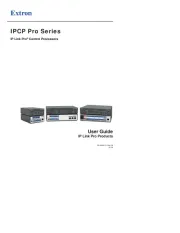
31 Juli 2025
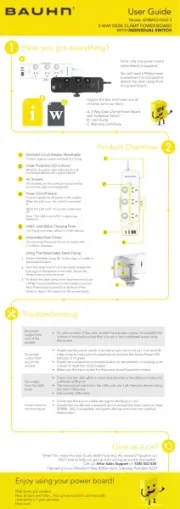
31 Juli 2025
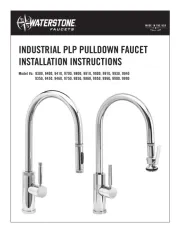
31 Juli 2025
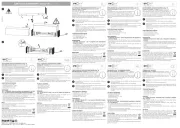
31 Juli 2025
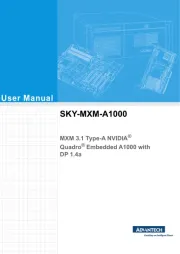
31 Juli 2025

31 Juli 2025

31 Juli 2025
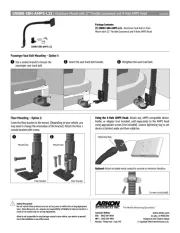
31 Juli 2025
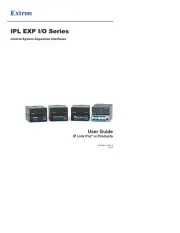
31 Juli 2025
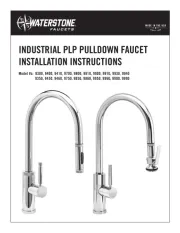
31 Juli 2025